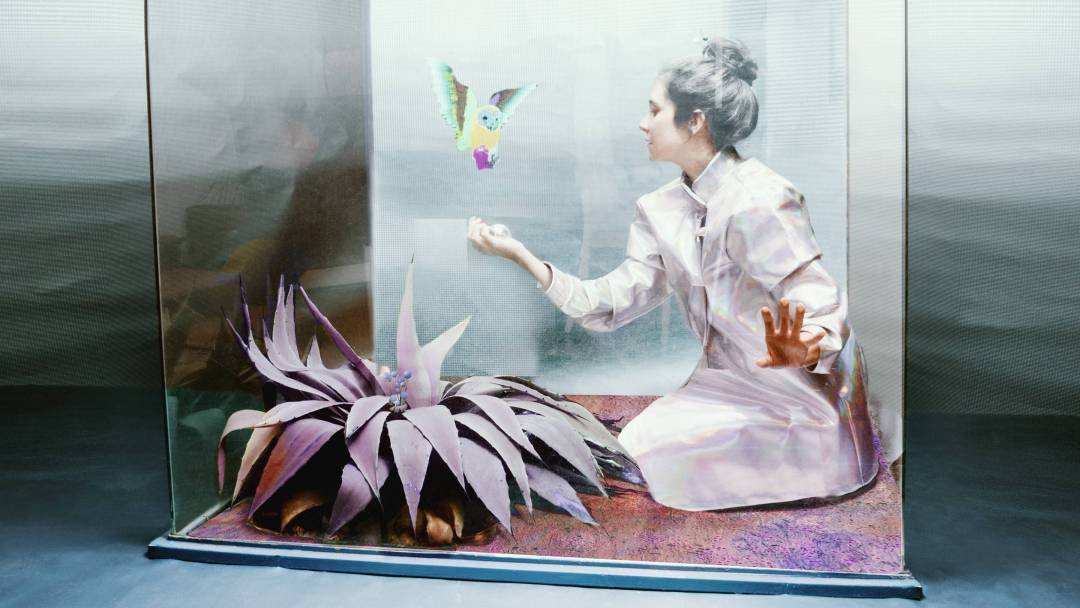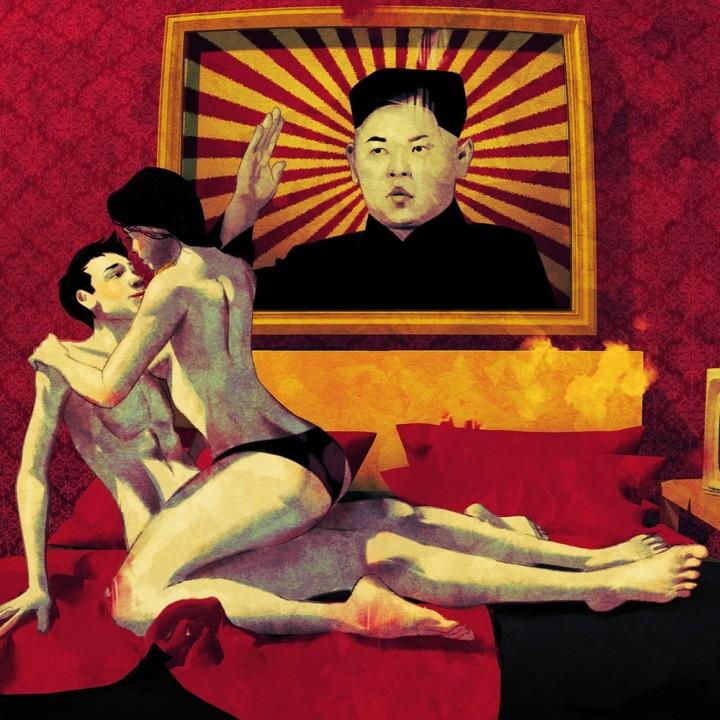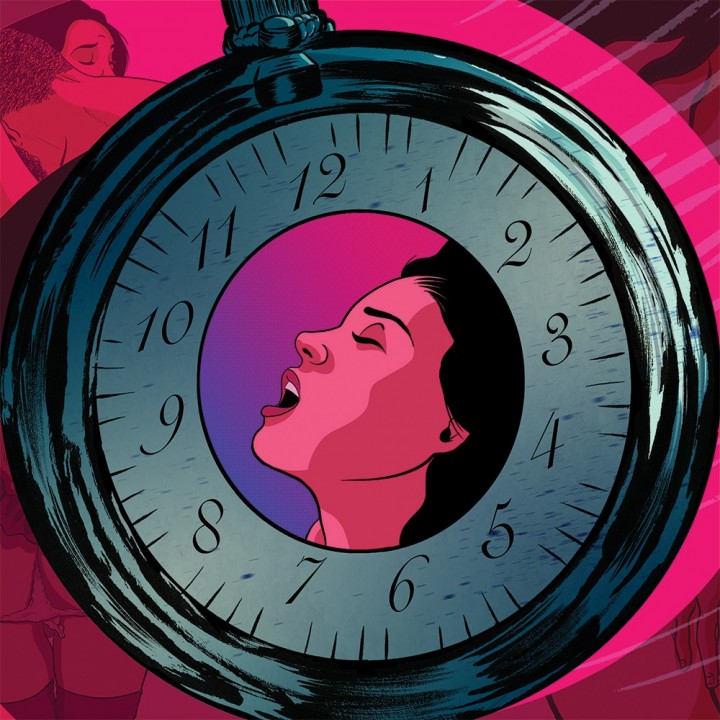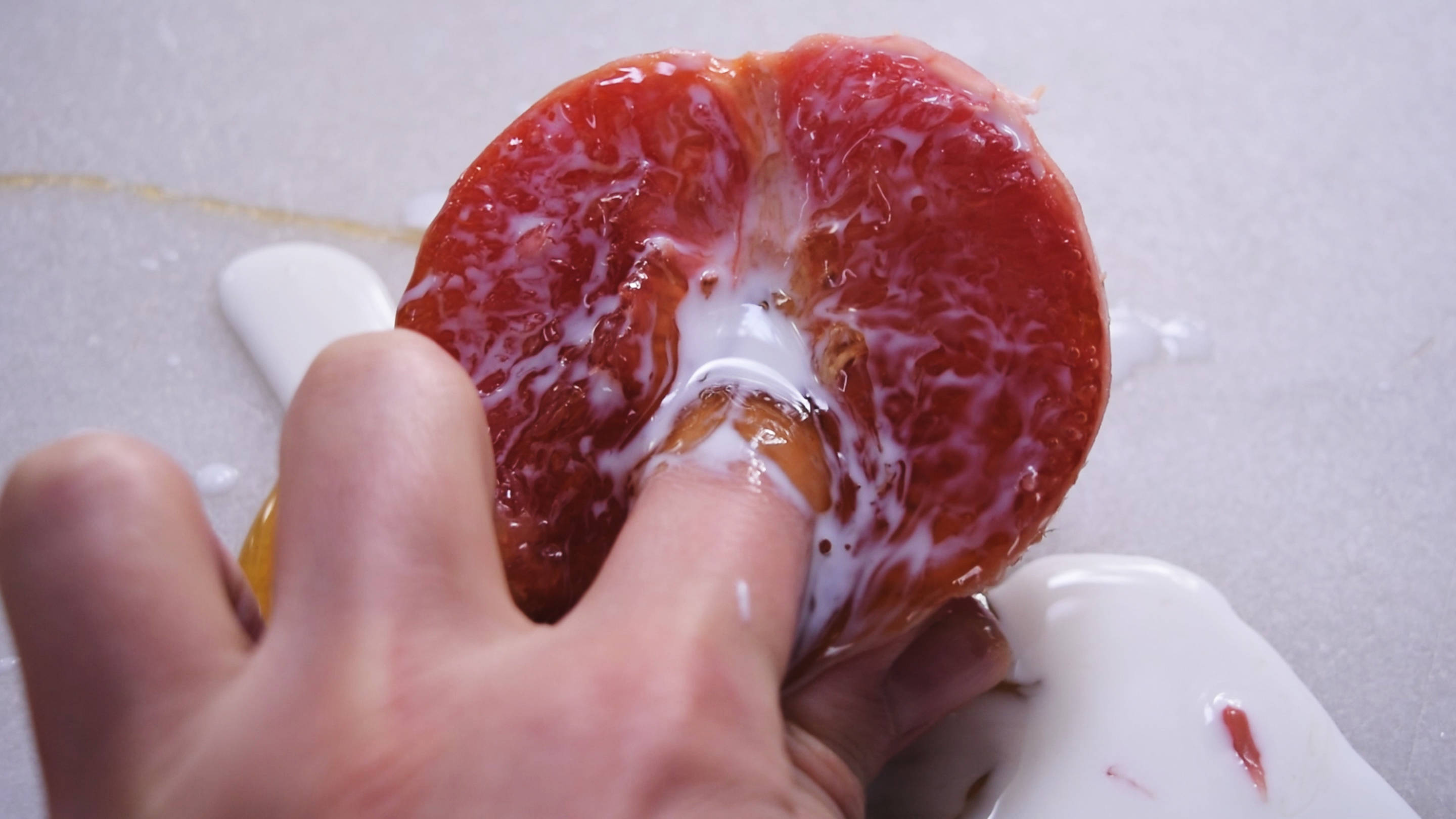
Years Later, Stephanie Sarley's Sensuous Fruit Art Is Still Ripe
Stephanie Sarley continues to shock seduce the art world, but why?
Stephanie Sarley insists: Don’t call her an Instagram artist. Yes, she’s achieved notoriety on the platform, but a grid of images is all surface-level stuff, a relevancy life vest. Her art can exist without it.
Before social media allowed for personal art cataloging, the 30-year-old had a traditional artistic upbringing. As a child, she would sketch with her filmmaker father at home in Berkley, go to museums with her grandparents, and stage DIY exhibitions inspired by Leonardo Da Vinci. Later, she studied printmaking at Oakland, California's Laney College and went on to publish an adult coloring book of dogs that look like dicks in 2013. Her professional work inspires a healthy dose of both female sexual liberation and humor: The "Orcunts and Crotch Monsters" series reimagines the vagina as flowering fauna and vulvas with personality, respectively. She shows her work in traditional settings, too, in museums and galleries (four shows this year alone in Berlin, Leipzig, The Netherlands, and London). Throughout it all, her work has focused on modern sexuality, kink, and representations of female bodies with a surrealist bent. However, a brush with viral fame on Instagram in 2016, a post documenting a spontaneous event with a blood orange and her finger, tethered Sarley and her work to Instagram.

The videos trigger a visceral reaction—they’re sensual, lucid and a bit funny. They harken back to a biblical context, female pleasure as the forbidden fruit. Sarley had already been using fruit in a series of self portraits, positioning the edibles between her legs, so her use of food in an artistic setting wasn’t altogether a new practice. The act of going viral on Instagram, however, removed context from the rest of her artistic catalogue. “The notion that I wasn't an artist was quite offensive,” Sarley says. “There was this huge media thing [questioning] ‘Is it art? Is it fingering? Is it porn?’”So she’s had to defend her identity. Whether it’s speaking out against censorship (Instagram removed her account numerous times prior to the fruit fingering videos due to the “sexually suggestive nature” of the "Orcunts and Crotch Monsters") or safeguarding her art from meme accounts who’ve earned a profit from reposting her work, Sarley has not only become an activist for feminist art but a case study for how the internet and virality impacts creators.
It was just her natural instinct to film herself petting the fruit, sinking her index finger into its center until a swell of red juice engulfed the extremity.
One of Sarley’s recent group exhibitions at the Museum Der Dinge in Berlin featured work that explored “modern day feminism and how that translates into sexuality and personal agency,” she explains. “That’s fundamentally who I am and what I’m trying to get out with these pieces.” Another exhibition, “Virtual Normality: Women Net Artists 2.0” at Leipzig’s Museum der Bildenden Künste, ruminates on, in Sarley’s words, “how your activism is out there and your art is out there and how that changes the platform for artists.” Digital art is central to these conversations. Regardless of any institutional backing, digital artists can share and disperse their work, and thus their messages, to a potentially unbound sea of eyes. But what does it mean as an artist to share these works in a traditional setting, a gallery, a locale which takes maximally more effort for viewers to access compared to an Instagram feed?The art world is still at odds with the digital revolution, Sarley says. There may be some corners of the medium that are slower to adapt, however, curators like Anika Meier, who was at the helm of “Virtual Normality: Women Net Artists 2.0” have increasingly progressive views on the artistic landscape. It was from Meier whom Sarley heard the term “post-internet art” as a way to classify work that uses “both online and offline formats to engage with digital culture, corporate culture, and the effects of ubiquitous networking.”
More Like This
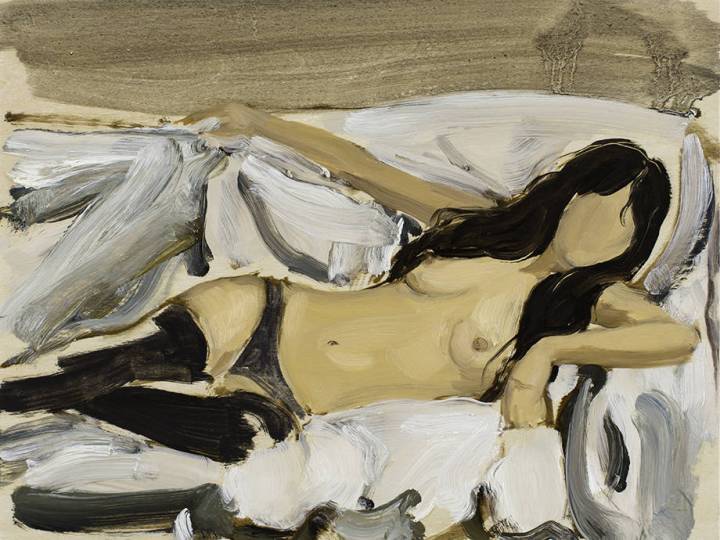
Artist Gideon Rubin: Inspirations from Vulnerability, Intimacy and Atrocity
Gideon Rubin's work reveals humanity's deepest fears
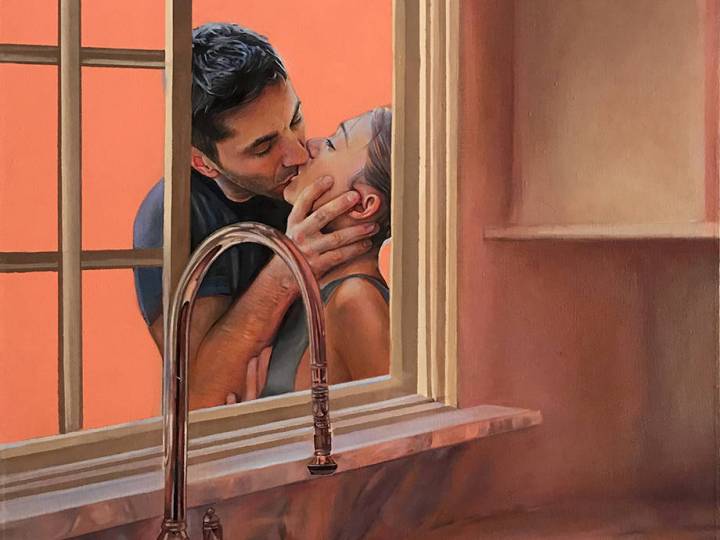
Artist Lily Morris Paints the Voyeur's View
Her art provides the gaze many have to look through a window or peer over a fence to see

Art You Can Sit On
Another Human is Leah Ring's artistic, versatile furniture design.

Artist Spencer Tunick Is Fighting For the Right to Get Naked
Legendary artist Spencer Tunick discusses #ReturnoftheNude ahead of its Melbourne debut
For all of Instagram’s complications—censorship, copyright infringement, hate mail — the platform, and her audience there, has undeniably become a part of Sarley’s career. On the plus side, there are fewer gatekeepers now who determine what is artistically poignant and deserves recognition. “There used to be a very select few people selecting everything that’s elite,” Sarley says. But then again, what’s to stop the masses from ripping off your creative property? Going viral helps your work cut through the white noise, sure, but having a defined focus and an unwavering vision ensure longevity.Because without the internet, Stephanie Sarley would still be an artist. And without her art the internet would be a lot less fruity. “When Instagram disappears, I’m still Stephanie Sarley.”

